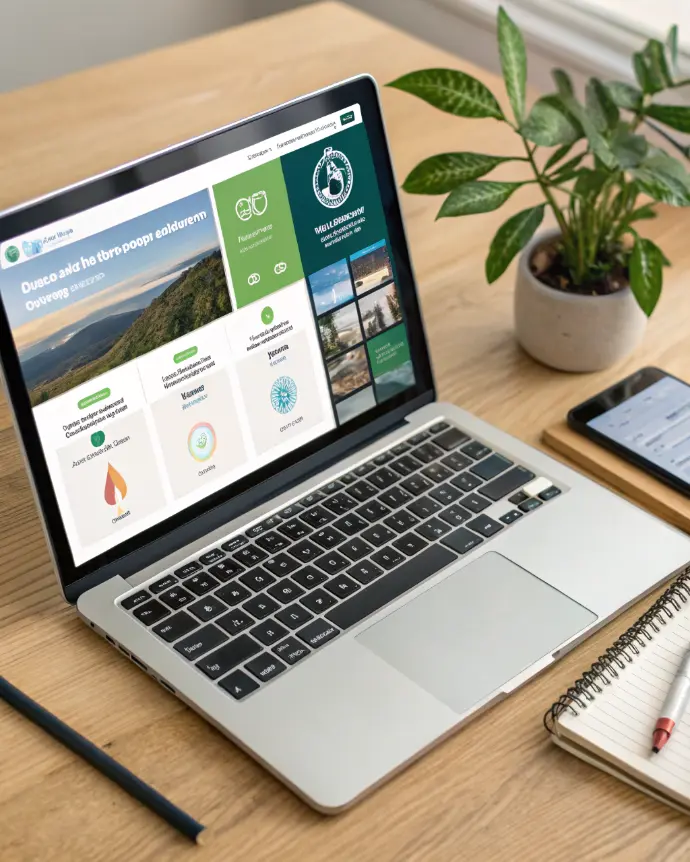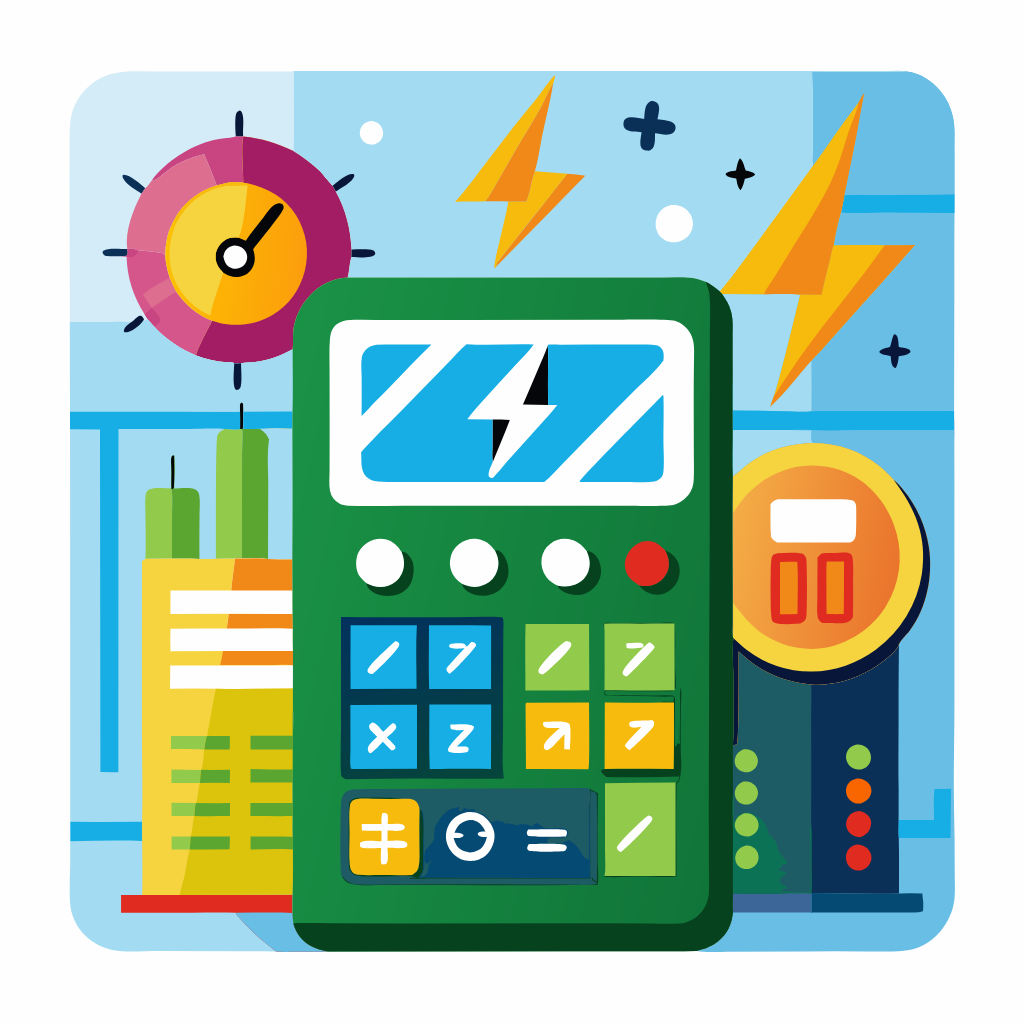Sustainability Tools
In today’s rapidly evolving world, taking responsibility for our environmental impact has never been more important. Sustainability tools provide individuals, households, and businesses with the means to monitor, evaluate, and reduce their environmental footprint. Whether you are looking to lower carbon emissions, save on energy bills, conserve water, or master recycling, our suite of sustainability tools is designed to guide you on your journey to a more sustainable future.



Understanding Your Environmental Footprint
Before diving into specific tools, it’s important to grasp what an environmental footprint is. Your environmental footprint is the measure of the impact your activities have on the natural environment. This includes carbon emissions from transportation, energy consumption in your home, water usage in daily activities, and the waste generated from your lifestyle.
By quantifying these impacts, sustainability tools enable you to:
- Identify high-impact areas: Discover which activities contribute the most to your overall footprint.
- Set reduction targets: Use baseline data to establish achievable goals for lowering your impact.
- Monitor progress: Track improvements over time to ensure you are moving toward a greener lifestyle.
Understanding your environmental footprint is the first step in making conscious choices that benefit both you and the planet.
Sustainability Tools
The Carbon Footprint Calculator, Energy Consumption Calculator, and Water Usage Calculator are essential sustainability tools that help individuals and households better understand their environmental impact. Dive into these tools and take your first steps towards a more sustainable future today:
The Carbon Footprint Calculator
What It Does
The Carbon Footprint Calculator is a vital tool for measuring the amount of carbon dioxide (CO₂) emissions produced by your daily activities. It takes into account various factors such as:
- Transportation: Commuting by car, bus, train, or air travel.
- Energy Use: Electricity, heating, and cooling in your home.
- Waste Production: The amount of waste generated and how it is disposed of.
How It Works
After inputting your data, the calculator processes your information and provides an estimate of your carbon emissions. This data helps pinpoint where your emissions are highest, allowing you to make targeted changes. For example, switching to public transportation, investing in energy-efficient appliances, or reducing waste can significantly lower your carbon footprint.
Benefits
- Actionable Insights: Identify the activities that contribute most to your carbon emissions.
- Cost Savings: Reducing energy use and optimizing transportation can lead to lower utility bills and travel costs.
- Environmental Impact: Small changes in your daily routine can lead to significant reductions in greenhouse gas emissions over time.
The Energy Consumption Calculator
What It Does
The Energy Consumption Calculator estimates the total energy usage in your household. It factors in elements such as:
- Appliance Usage: Frequency and duration of use.
- Heating and Cooling: Energy required for climate control.
- Lighting: Electricity used for both indoor and outdoor lighting.
How It Works
By inputting your home’s energy usage details, the calculator provides a comprehensive overview of your total energy consumption. It often includes comparisons to similar households and suggests ways to improve energy efficiency. This can involve tips like upgrading to LED lighting, using smart thermostats, or sealing windows and doors to prevent energy loss.
Benefits
- Improved Efficiency: Understand where you can cut back on energy use.
- Financial Savings: Lower energy bills by adopting energy-saving measures.
- Reduced Carbon Emissions: Contribute to reducing your carbon footprint by optimizing energy consumption.
The Water Usage Calculator
What It Does
Water is a vital resource, and the Water Usage Calculator helps track your daily water consumption. It analyzes usage in various activities, including:
- Personal Hygiene: Showering and bathing.
- Cooking and Cleaning: Water used in food preparation and household cleaning.
- Gardening and Landscaping: Watering lawns, gardens, and plants.
How It Works
The tool collects data on your daily water use and estimates the overall consumption. By identifying patterns and pinpointing areas where water use is high, it suggests practical measures to reduce wastage. This might include fixing leaks, using water-efficient appliances, or employing rainwater harvesting systems.
Benefits
- Resource Conservation: Helps ensure that water is used responsibly.
- Cost Efficiency: Reducing water consumption leads to lower utility bills.
- Environmental Impact: Conserving water contributes to preserving local water resources and reducing strain on municipal systems.
Waste Reduction Planner
What It Does
The Waste Reduction Planner is designed to help you minimize waste generation and optimize the use of resources. This tool focuses on:
- Waste Auditing: Assessing the types and amounts of waste produced.
- Recycling Initiatives: Identifying which materials can be recycled or repurposed.
- Composting: Developing a plan for organic waste management.
How It Works
By providing a detailed analysis of your waste output, the planner helps you identify inefficiencies and opportunities for waste reduction. It offers tailored strategies for:
- Reducing Waste at Source: Encouraging practices like bulk buying and avoiding single-use products.
- Improving Recycling Practices: Offering guidance on how to properly sort and dispose of different types of waste.
- Implementing Composting: Helping you set up a compost system to turn organic waste into valuable fertilizer.
Benefits
- Environmental Benefits: Reducing waste lowers the burden on landfills and minimizes pollution.
- Economic Savings: Efficient waste management can reduce disposal costs.
- Sustainable Living: Promotes a circular economy by turning waste into a resource.
Green Building Advisor Tool
What It Does
The Green Building Advisor Tool is an interactive platform that helps enhance the energy efficiency and overall sustainability of buildings. It is tailored for:
- Homeowners and Builders: Offering personalized recommendations based on your building’s specific details.
- Renovation Projects: Providing insights on retrofitting existing structures to improve energy performance.
- New Construction: Guiding the design of energy-efficient and environmentally friendly buildings.
How It Works
This tool analyzes various aspects of your building, including insulation, window efficiency, and heating systems. It then provides actionable recommendations to:
- Reduce Energy Consumption: Suggestions for improvements like energy-efficient windows or better insulation.
- Enhance Indoor Environmental Quality: Tips for natural ventilation, lighting, and sustainable building materials.
- Lower Operating Costs: Strategies to reduce long-term energy bills and maintenance costs.
Benefits
- Improved Energy Efficiency: Directly impacts energy use and carbon emissions.
- Enhanced Comfort: Creates a healthier living environment through better air quality and natural lighting.
- Long-Term Savings: Reduces energy costs and increases the value of your property over time.
Recycling Guide
What It Does
The Recycling Guide is a comprehensive resource designed to help you manage waste more effectively. It covers:
- Material Sorting: Detailed instructions on how to sort various types of waste such as plastics, metals, paper, and organic materials.
- Recycling Best Practices: Guidelines on what can and cannot be recycled, ensuring that your efforts are both efficient and effective.
- Community Recycling Programs: Information on local recycling facilities and initiatives that can help boost your recycling efforts.
How It Works
This guide provides step-by-step instructions and visual aids to help users understand the recycling process. It covers:
- Sorting Tips: How to separate recyclables from non-recyclables.
- Preparation: How to clean and prepare items for recycling.
- Local Resources: Directories and links to local recycling centers and community programs.
Benefits
- Enhanced Recycling Efficiency: Ensures that more waste is properly recycled, reducing landfill use.
- Environmental Protection: Helps reduce pollution and conserve natural resources.
- Community Engagement: Fosters a culture of sustainability by encouraging local recycling initiatives.
Eco Challenges App
What It Does
The Eco Challenges App is an interactive, gamified application designed to inspire and motivate users to adopt more sustainable habits in their daily lives. By turning sustainability into an engaging, challenge-based experience, the app encourages individuals to actively participate in eco-friendly practices that have a real impact on the environment. Users can track their progress, complete daily, weekly, and monthly eco challenges, and earn rewards while learning valuable environmental tips.
How It Works
-
Daily, Weekly, and Monthly Challenges:
The app offers a variety of sustainability challenges that cater to different levels of difficulty and commitment. Whether it’s reducing water usage, minimizing waste, or choosing sustainable transportation options, each challenge is designed with an estimated environmental impact—such as CO₂ reduction—so users can see the tangible benefits of their actions. -
Achievements and Rewards:
As users complete challenges, they unlock achievements like "Eco Warrior" or "Water Guardian." These milestones are celebrated with fun animations and notifications, which not only acknowledge progress but also motivate users to continue their eco-friendly journey. -
Leaderboard:
The app features a competitive leaderboard where users can see how they rank compared to others. This friendly competition fosters community spirit and motivates participants to take on more challenges to climb the rankings. -
Educational Quizzes:
To further enhance learning, the Eco Challenges App includes quizzes that test users’ knowledge on sustainability topics. Earning points through correct answers, users can track their learning progress and gain deeper insights into environmental issues. -
Progress Dashboard:
A personalized dashboard displays key metrics such as the number of completed challenges, total environmental impact (e.g., kilograms of CO₂ saved), and personal best scores. This feature allows users to visualize their contributions toward a greener planet. -
Eco Tips and Resources:
The app provides a wealth of eco-friendly tips and access to a library of articles and guides on sustainable living. These resources offer practical advice and help users implement sustainable practices in their everyday lives.
Benefits
-
Environmental Impact:
By encouraging sustainable habits, the app helps reduce carbon emissions, conserve water and energy, and minimize waste. Every challenge completed contributes to a measurable reduction in environmental footprint. -
User Engagement and Motivation:
The gamification aspect—through challenges, rewards, and leaderboards—keeps users engaged and continuously motivated. This interactive approach makes learning about sustainability fun and accessible. -
Educational Value:
With its quizzes and extensive resource library, the Eco Challenges App educates users on important environmental issues. This increased awareness leads to more informed decisions and a stronger commitment to eco-friendly practices. -
Community Building:
The competitive and communal elements of the app, like the leaderboard and shared challenges, foster a sense of community. Users are encouraged to share their progress, exchange tips, and support one another in the journey toward sustainability. -
Personal Empowerment:
By tracking individual progress and showcasing tangible results—such as the amount of CO₂ reduced—the app empowers users to see the direct impact of their efforts. This feedback loop promotes long-term commitment to sustainable living.
How to Use Sustainability Tools Effectively
To maximize the benefits of these sustainability tools, consider the following strategies:
- Regular Monitoring: Use the calculators and planners on a monthly or quarterly basis to track your progress.
- Set Measurable Goals: Establish clear targets for reducing your carbon emissions, energy, and water usage.
- Integrate Tools: Combine data from various tools to get a comprehensive view of your environmental impact.
- Educate Your Household: Share insights and encourage family members or colleagues to adopt sustainable practices.
- Stay Updated: Keep an eye on new features and updates in these tools to continually improve your sustainability efforts.
By incorporating these habits, you can create a systematic approach to sustainability that is both actionable and rewarding.
Benefits of Using Sustainability Tools
Using sustainability tools offers a range of benefits that extend beyond personal environmental impact:
- Environmental Impact: Reducing your footprint helps mitigate climate change and conserves vital resources such as water and energy.
- Economic Savings: Many sustainability practices lead to lower utility bills, reduced waste disposal costs, and increased property value.
- Health and Well-being: A cleaner environment contributes to better air and water quality, which in turn improves overall health.
- Community Benefits: Sharing sustainability practices can encourage local initiatives and foster stronger, more resilient communities.
- Educational Value: Using these tools provides a tangible way to learn about environmental impacts and the importance of sustainable living.
Case Studies and Success Stories
Real-world examples of sustainability tools in action:
Residential Success Stories
- Household Energy Reduction: Families using the Energy Consumption Calculator have reported up to a 20% reduction in monthly bills by identifying inefficient appliances and adopting energy-saving habits.
- Water Conservation Wins: Homeowners who integrated the Water Usage Calculator into their daily routine have successfully reduced their water consumption through measures like leak repairs and installing water-efficient fixtures.
Community Initiatives
- Local Recycling Programs: Municipalities that implement comprehensive recycling guides have seen an increase in community recycling rates, reducing landfill waste and fostering local green initiatives.
- Green Building Projects: Residential developments that have utilized the Green Building Advisor Tool have enhanced energy efficiency and increased property values while creating healthier living spaces.
These success stories underline the tangible benefits of using sustainability tools and the potential for positive change when communities come together.
A Call to Action for a Greener Tomorrow
Sustainability tools are more than just digital applications—they are instruments of change that help us understand, measure, and reduce our environmental footprint. From tracking carbon emissions and energy usage to optimizing water consumption and waste management, these tools offer practical solutions to some of the most pressing environmental challenges of our time.
By leveraging these tools, you can take concrete steps towards a more sustainable lifestyle. Whether you are an individual looking to make daily changes or a community leader driving larger initiatives, every action counts. Embracing sustainability is not only beneficial for the environment—it also promotes economic savings, healthier living conditions, and a stronger sense of community.
Now is the time to act. Explore these sustainability tools, set achievable goals, and monitor your progress as you contribute to a greener, more resilient future. Your journey to sustainability starts with informed decisions and a commitment to continuous improvement. Together, we can create a world where every individual effort adds up to a significant, positive impact on our planet.
Join the movement, empower yourself with data, and make sustainability a central part of your everyday life. The future of our planet depends on the choices we make today—let’s choose a sustainable path for a brighter tomorrow.

Carbon Footprint Calculator
Calculating and lowering your carbon footprint is a vital step towards living more sustainably and combating the effects of global warming, contributing to a healthier planet for future generations.

Energy Consumption Calculator
An energy consumption calculator can help you identify areas where you can save energy, reduce utility bills, and contribute to environmental sustainability.

Water Usage Calculator
Using a water usage calculator promotes awareness and encourages responsible habits that can help reduce waste, lower utility bills, and preserve natural water sources.